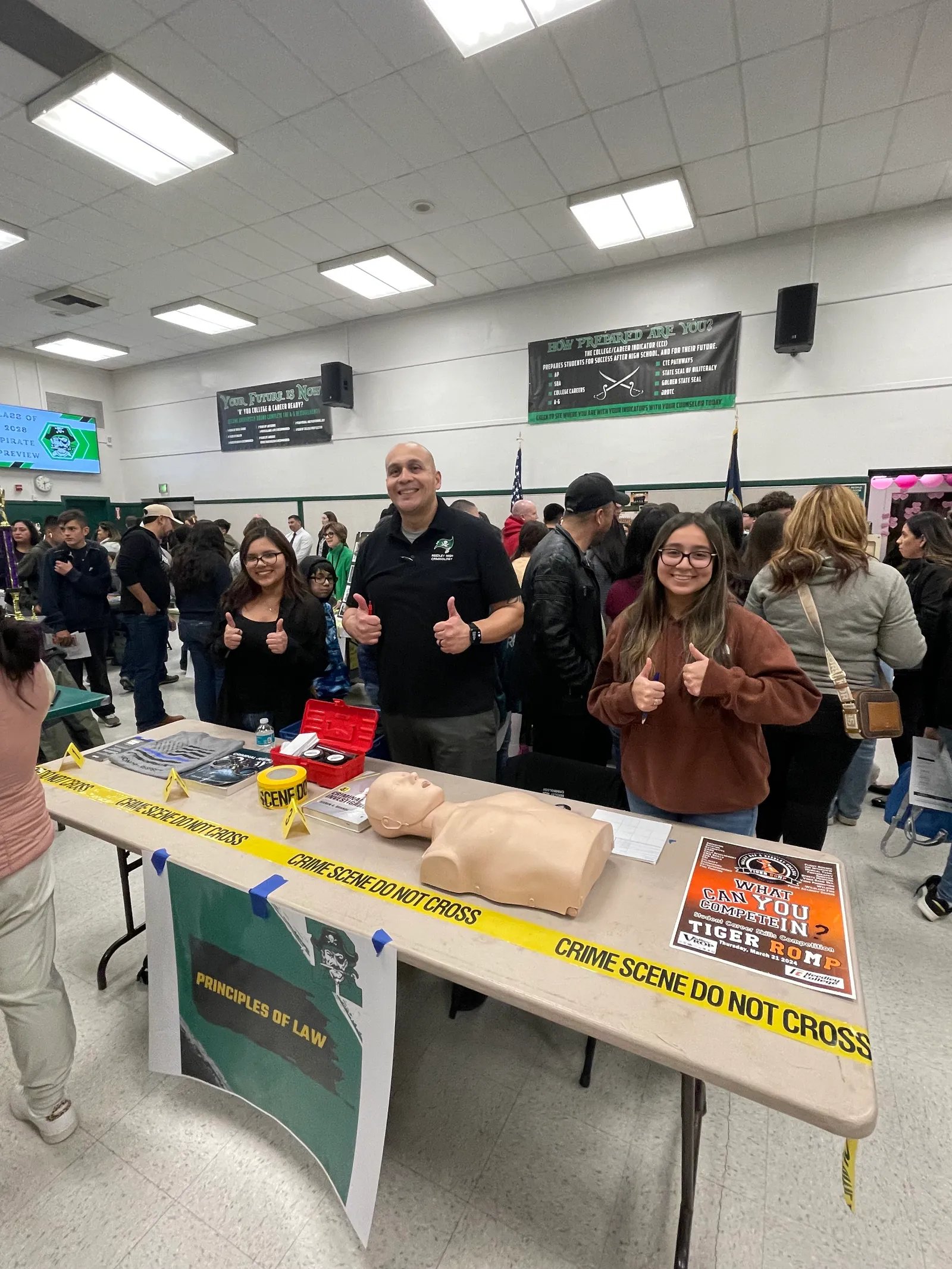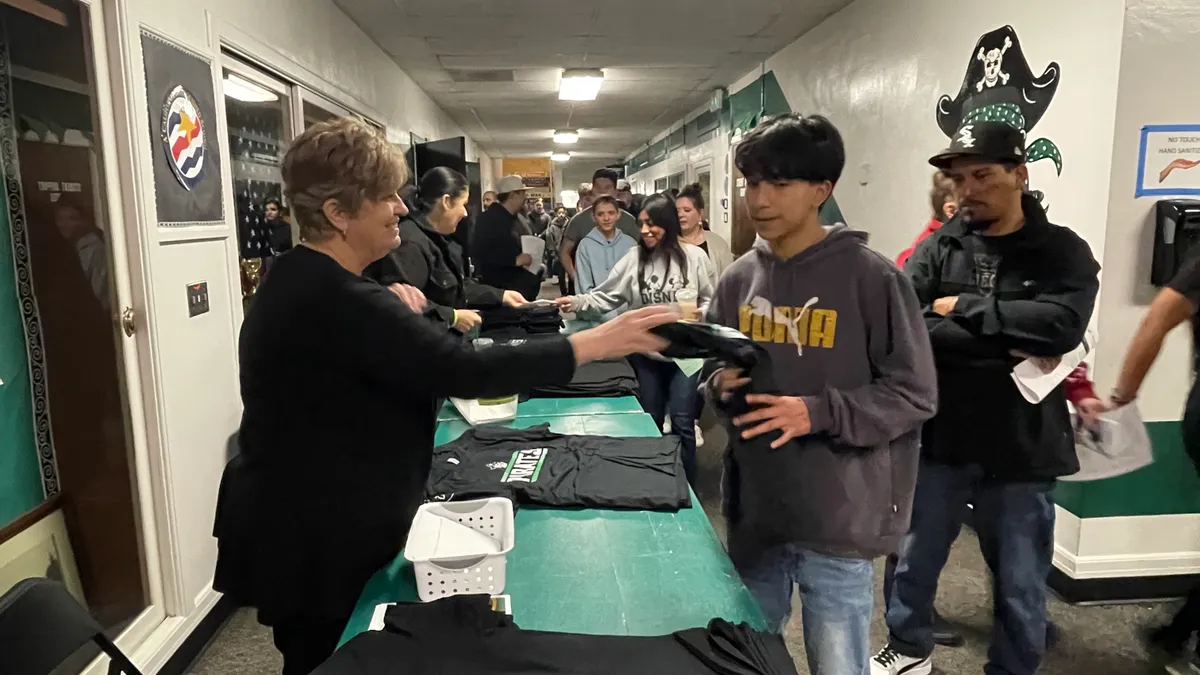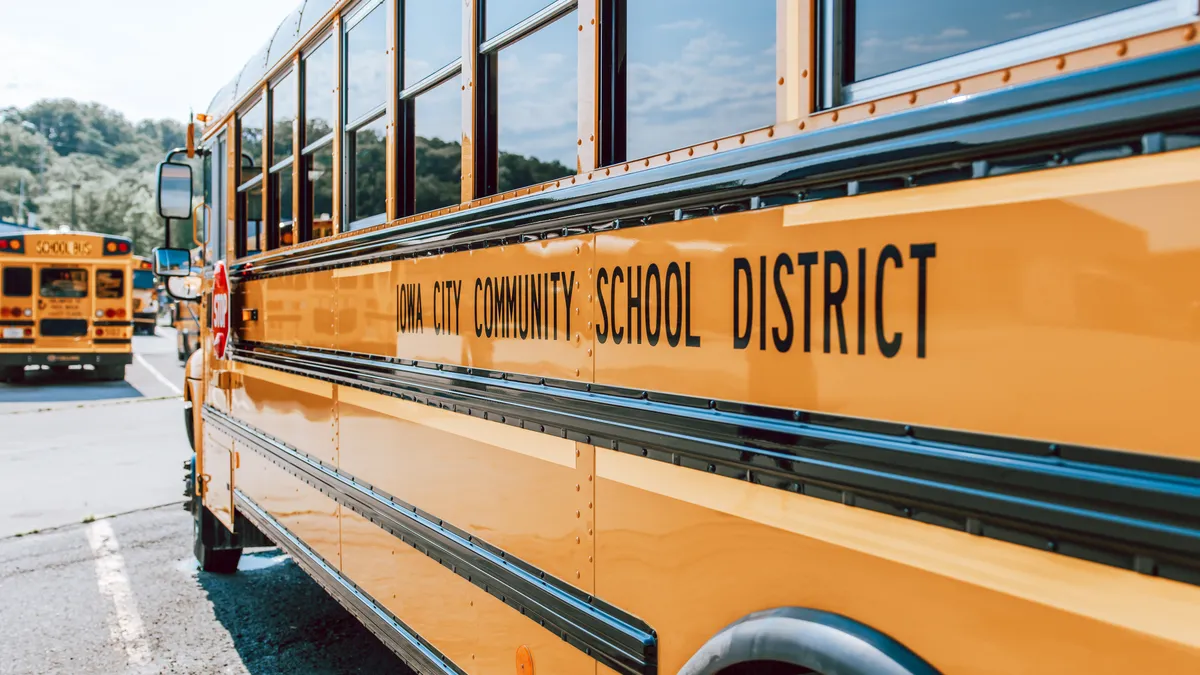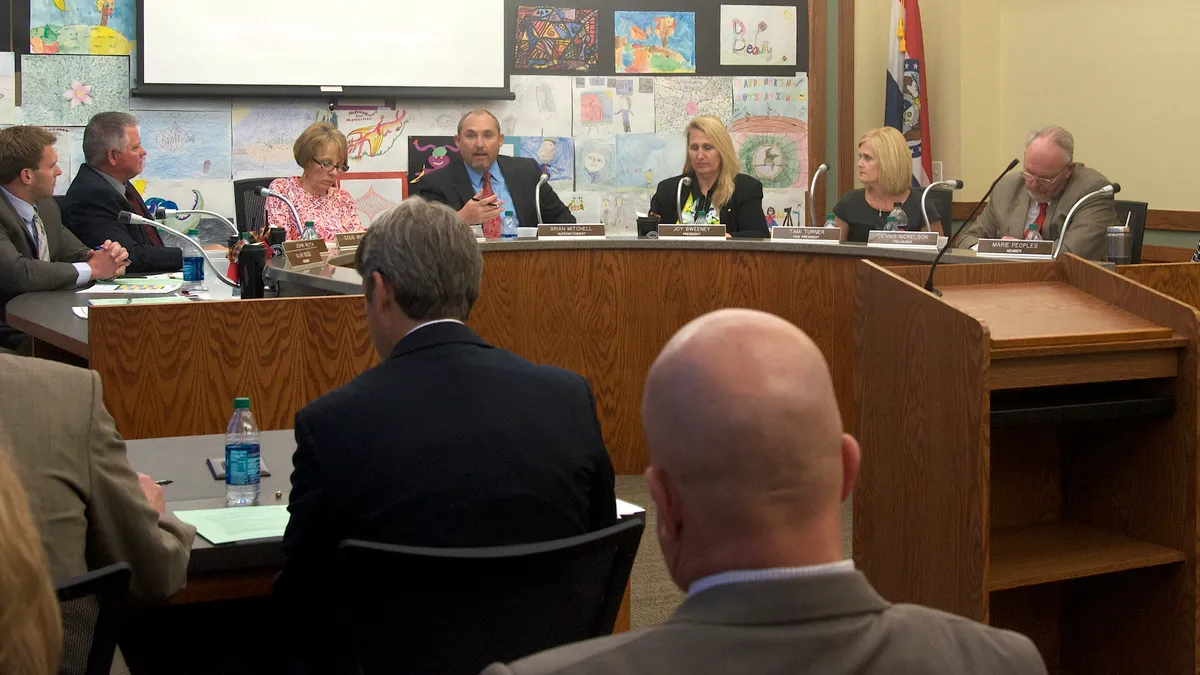As principal of the 1,800-student Reedley High School in California, John Ahlin knows he can't be in all places all the time, so he relies on a network of teams that monitor attendance, along with learning, teaching, school management, school culture and more.
Ahlin credits this team approach for Reedley High's low chronic absenteeism rate of 5.6%. Nationally, chronic absenteeism — measured as when students miss 10% of the school year, or about 18 days — was 29.7% in 2022, which is the last year for which nonprofit group Attendance Works has national data.
According to FutureEd, a think tank at Georgetown University's McCourt School of Public Policy, of the 42 states and the District of Columbia that have publicly released 2022-23 absenteeism data, 30 have improved chronic absenteeism rates by 5 percentage points or less. Michigan showed the greatest recovery. There, chronic absenteeism fell 7.7 percentage points to 30.8%, although that still rises above its 20% chronic absenteeism rate in 2018.
While some national data shows a slight bump in student attendance for 2023, education experts continue to sound alarms about high absenteeism contributing to lower school engagement and academic outcomes.
Just last month several key organizations called for a national goal of decreasing chronic absenteeism by 50% in five years. Hedy Chang, executive director of Attendance Works, said much of this effort requires schools to be intentional and consistent in developing relationships with students, families and staff.
Chang said schools need to have positive conditions for learning that promote physical and emotional health, safety, a sense of belonging, academic rigor and student engagement. Positive connections between students and adults are vital as well.
"You need to have the entire school building those relationships," Chang said.
Investing in relationships
At Reedley High, the principals' teams each have a specific mission but work collaboratively to boost student academics, engagement and attendance. An early release every Wednesday for grades 9-12 gives the teams time to coordinate.
One team — the Transition Team — focuses on encouraging 9th graders to maintain good academic, attendance and social habits throughout high school and into their postsecondary lives. In addition to monitoring attendance data and developing universal, small group and individualized interventions, the team designs fun activities to welcome the new students to campus.

To start with, a Pirate Preview event held each February brings 8th graders from Reedley's six feeder schools to the high school to learn about course offerings, meet teachers and watch a school performance.
Then over the summer, the school hosts Pirate Days for incoming 9th graders and their parents. These events provide campus tours, information on school expectations and how to navigate the learning management system, and opportunities to interact with teachers and staff. This year, the theme is "Sail into RHS," and students will get water bottles and T-shirts with the school's name or logo, Ahlin said.
"The simplest way for me to put it is customer service, and really it's being kind, listening, always providing a response."

John Ahlin
Principal of Reedley High School
The relationship-building with 9th graders and their parents — as well as the whole school community — continues throughout the school year. Ahlin and other staff members attend dances and sporting events, and they greet students at the start of the school day and in the lunchroom.
The school's teams collaborate often about which students need academic, attendance or other supports, the interventions being tried, and the progress made.
"The simplest way for me to put it is customer service, and really it's being kind, listening, always providing a response," Ahlin said. "It might not always be the response everybody wants to hear, but you always need to have a response."
The investment in welcoming and supporting its 9th graders is purposeful, Ahlin said.
"If we can make students successful in 9th grade, we found that our data just shows that they have a better chance of not only graduating high school, but finishing a career pathway or going on to a university or a junior college," he said. "When kids get behind right away, it's much more difficult."
He said his school isn't perfect, but the structure and devotion to students are there. "We continue to work as a team, continue to listen and continue to evolve," Ahlin said.






 Dive Awards
Dive Awards








